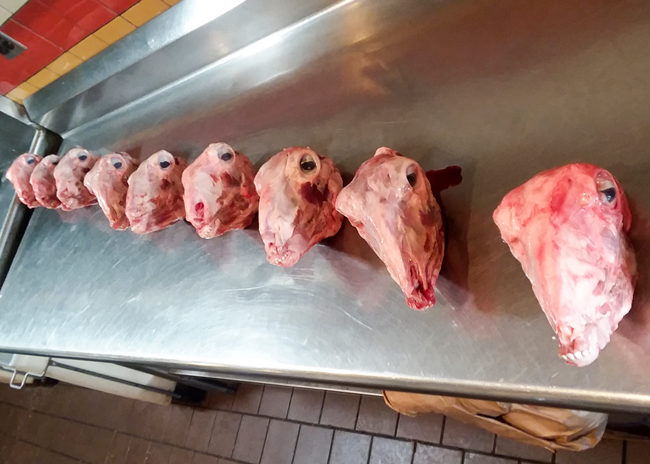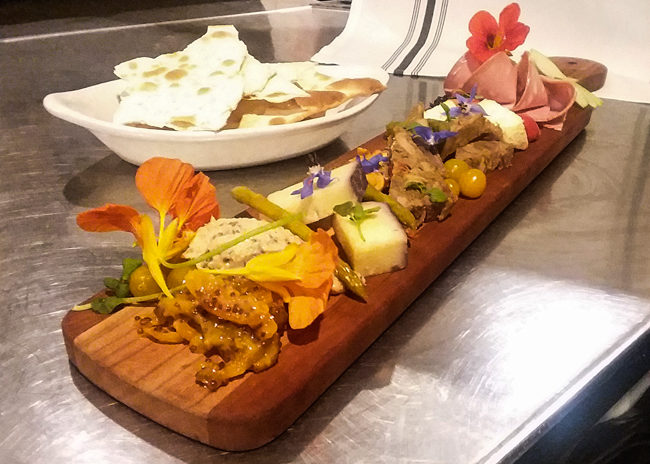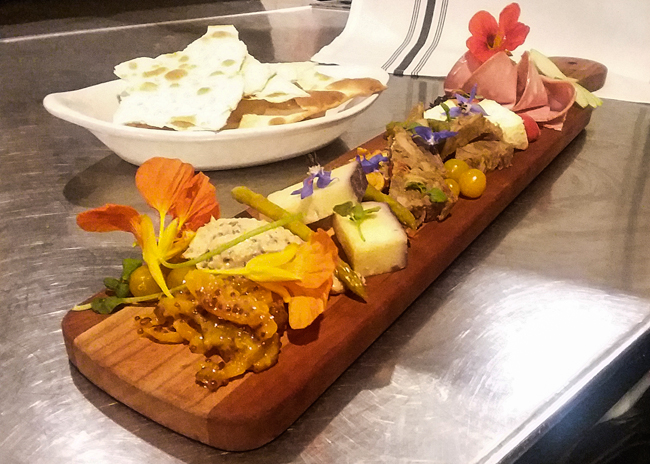
This story is sponsored by Shepherd Song Farm.
In the Old World, when an animal was butchered, every single part of it was used, leaving nothing to waste. That practice faded away with the advent of modern farming, which produced such bounty that cooks could afford to use only the best parts, tossing away the less-desired cuts.
Whether it’s nostalgia or a desire to waste less, the “nose to tail” movement is coming back in full force. Chefs are embracing cuts that might otherwise go to waste — including the head.
Casey Pikula, executive chef at Stem Wine Bar in Northeast Minneapolis, is one of those chefs. Pikula fondly remembers watching his maternal grandmother making head cheese, a cold cut that originated in Europe, from which her ancestors hailed. Pikula watched in awe as his grandmother split the skulls, boiled the heads, and peeled the meat from the bones, producing a dish he describes as “absolutely delicious.”

Before Pikula joined Stem Wine Bar, he was head chef at Red Stag Supperclub. As he brainstormed ways to refresh Red Stag’s charcuterie program, memories of his grandmother’s head cheese came rushing back. Pikula decided to recreate her recipe with a few new twists. Instead of using beef or pork, he opted for 100 percent grass fed lamb from Shepherd Song Farm in Downing, Wis. He infused the head cheese with Madras curry and added pickled Fresno chilies and preserved limes.
It took Pikula 10 lamb heads and two weeks to create four pounds of head cheese, but the labor of love was worth it. When the head cheese made its debut on Red Stag’s charcuterie menu, it sold out instantly.
There are many recipes available for head cheese, but Pikula didn’t use one. Instead, he felt his way through the process, which is documented below to inspire other “nose to tail” chefs to try it for themselves. “I don’t think chefs are really taking the nose to tail movement to heart,” said Pikula. “If you’re not making head cheese, then you’re letting this delicious meat go to waste.”
Pikula is excited to begin his next project, which will soon appear on Stem Wine Bar’s menu: Lamb Heart Pastrami, which uses meat from Shepherd Song Farm. “We offer so much more than lamb chops,” says the owner of Shepherd Song Farm, Judy Moses. “From racks, legs, and ground meat to shanks, organ meats, and heads, we offer a full selection of 100 percent grass fed lamb and goat meat for every recipe.”
Pikula chose to partner with Shepherd Song Farm because of their commitment to traditional, sustainable, and humane farming practices. Shepherd Song Farm’s sheep and lambs live on pasture in the open air and sunshine, where they are 100 percent grass fed. This results in lean and flavorful meat rich in Omega-3 fatty acids, Vitamin E, and beta-carotene. To place an order, visit www.shepherdsongfarm.com.

LAMB HEAD CHEESE
Photos and process provided by Chef Casey Pikula
Ten lamb heads from Shepherd Song Farm were used.
Step 1: The skulls were split and the brain and eyes removed. The brains were reserved for a terrine. The eyes were discarded.
Step 2: A rub was made with Madras curry powder, salt, black pepper, minced ginger, minced garlic, and minced preserved limes that had been created a month or so beforehand. The heads were rubbed with this mixture and left to dry in the cooler for three days.
Step 3: After drying, the heads were simmered in water for four hours, along with aromatic herbs and vegetables, to thoroughly cook all of the flesh, but also to make a stock that would be used later.
Step 4: When the heads were fully cooked they were removed and allowed to cool.
Step 5: The tongues were removed, and all the flesh was stripped from the skulls. The stock was strained and put back on the stove to be reduced to a demi-glace, bringing it down from three gallons to less than a quart. Half a dozen sheets of gelatin were added to the stock as lamb heads do not contain a large amount of collagen as a hog’s head would. This was necessary to form a cohesive loaf.
Step 6: The tongues were skinned and finely diced. They were added to the rest of the head meat along with pickled Fresno chili peppers, very fine preserved lime threads, and the reduced stock.
Step 7: The mixture was put in a pan and pressed with weights overnight. The loaf was pulled from the pan the next day and portioned for service.

